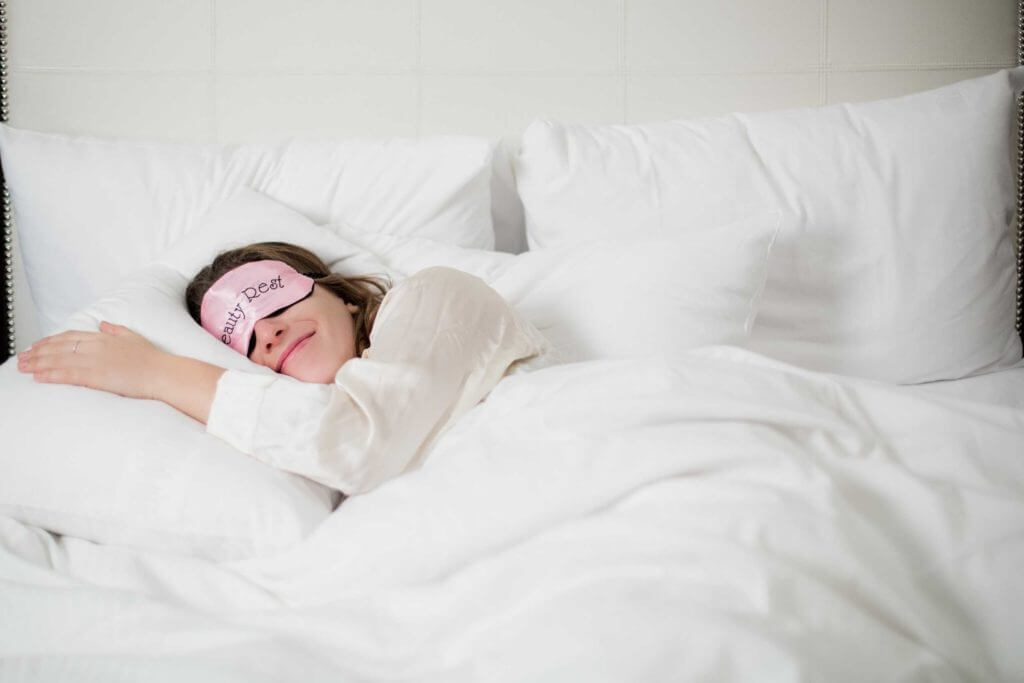Posture and Sleep
Max Frenkel

Have you ever woken up with neck or back pain you attributed to sleeping poorly? We’ve all been there. It’s not necessarily a matter of sleeping wrong, but rather that you might not have maintained proper spinal alignment while sleeping. Poor sleep posture can lead to disrupted sleep, increased tension, and poor circulation.
This can lead to neck, back, and shoulder pain the following morning. Unfortunately, this pain can stay with us throughout the day and may even lead to chronic pain going forward. So, what gives?
The fact is, learning how to fix posture while sleeping matters tremendously. Of course we can make a cognitive effort to maintain upright posture during the day, but what happens to our posture when we’re snoozing? Furthermore, are there healthy sleeping positions? Or ways to sleep that are better than others? The answer is yes, and the way we sleep influences our posture.
Let’s break down our sleeping habits and discover how to fix posture while sleeping for better daily well-being.
How to Fix Posture While Sleeping: Step-by-Step Guide
Fixing your posture while sleeping starts with understanding proper spinal alignment and choosing the right sleep positions. Here’s your complete guide to fix posture while sleeping:
Step 1: Choose the Best Sleeping Position for Good Posture
Back Sleeping (Best Option):
- Lie on your back with a pillow under your knees
- Use a supportive pillow that maintains your neck’s natural curve
- Keep your arms at your sides or on your chest
- This position maintains spinal alignment naturally
Side Sleeping (Second Best):
- Sleep on your side with knees slightly bent
- Place a pillow between your knees to align your hips
- Use a pillow that fills the gap between your neck and shoulder
- Keep your ears, shoulders, and hips in a straight line
Step 2: Fix Poor Sleep Posture Habits
To effectively fix posture while sleeping, you need to address these common issues:
- Wrong pillow height: Your pillow should support your neck’s natural curve
- Mattress problems: A sagging mattress can’t support proper spinal alignment
- Sleeping on stomach: This position strains your neck and lower back
- Fetal position: Curling up too tightly can cause morning stiffness
How Does Sleep Affect Posture?
Good posture doesn’t only involve sitting and standing but also how we relax and sleep. Moreover, poor sleeping posture can cause back pain and muscle strain. While sleeping or resting, it’s important to maintain spinal alignment that’s conducive to the natural curvature of the lower back.
The spine naturally curves in an S-shape, and it’s important to support the body along the length of this curve. Doing this ensures that there’s no added pressure on the lower back or developed kinks. We know what you’re thinking: how can we control our bodies while we sleep? It’s a valid point, especially for those deep sleepers.
While you may doze off to sleep and lose control of your posture throughout the night, there are certain measures you can take to set yourself up to fix posture while sleeping.
Ways to Improve Posture While Sleeping
Here are proven ways to improve posture while sleeping and wake up feeling refreshed:
1. Optimize Your Sleep Environment
- Invest in a quality mattress: Medium-firm mattresses typically provide the best spinal support
- Choose the right pillow: Your pillow should maintain your neck’s natural alignment
- Consider a body pillow: Great for side sleepers to maintain proper alignment
- Use a small lumbar pillow: If back sleeping, place a small pillow under your lower back
2. Pre-Sleep Posture Routine
- Gentle stretching: 5-10 minutes of light stretching before bed
- Posture check: Consciously position yourself correctly when getting into bed
- Deep breathing: Helps relax muscles and maintain proper alignment
What is the Best Sleeping Position for Posture?
The best position to sleep in is on your back. While you’re falling asleep, try lying on your back with a pillow or cushion beneath your knees. This positions your body to provide support to your spine, even if your bed isn’t shaped to the curve of your back.
If you absolutely can’t sleep on your back, try sleeping on your side with your knees bent. You can even place a pillow between the knees to keep your hips aligned.
To keep your body straight in either of these sleeping positions, think to align your ears, shoulders and hips on one flat plane. Any twisting that moves either your ears, shoulders, or hips out of line with the other two is causing strain on your spine.
Even when you are getting into bed, repositioning to get comfortable, or getting up in the morning, you want to keep these three spots in line. If you concentrate on moving the trunk of your body as one unit, instead of twisting, you will better support your posture needs.
Ultimately, you’ll want to sleep either on your side or back with the spine aligned straight. Each one of these options are healthy sleeping positions that will gently support the natural curvature of the spine.
How to Sleep for Better Posture: Advanced Tips
For those serious about learning how to sleep for better posture, consider these advanced techniques:
Sleeping Upright Considerations
While sleeping upright isn’t ideal for most people, some situations may require it. If you must sleep in an upright sleeping position:
- Use proper neck and lumbar support
- Avoid sleeping upright regularly as it can cause circulation issues
- Consider a recliner with good ergonomic design
- Keep your feet elevated to improve circulation
Correct Sleeping Posture Alignment
Perfect sleeping posture involves:
- Head position: Neutral alignment with your spine
- Neck support: Maintained natural curve
- Shoulder placement: Relaxed, not hunched forward
- Hip alignment: Level and supported
- Leg position: Slightly bent, not pulled up to chest
Sleeping Postures to Avoid
It’s best to avoid sleeping on your stomach as this position can create tension in the lower back. Sleeping on your stomach highlights putting strain on all the parts of the “s-curve” that need support. With a pillow under your head the weight adds pressure to the neck and spine. This is often the culprit to morning neck-aches.
However, a sleep study found that 17% of people prefer sleeping on their stomachs. If this is you, place a pillow under your waist to keep the spine supported. While this added support may take some time to adjust to, it will help your body in the long run.
Try to avoid sleeping in the fetal position, as this can add unwanted stress to the spine. When on your side, keep the knees slightly bent without pulling them up toward the chest. If you must bring your knees forward, keep the bend of your knees lower than hip level.
How to Permanently Fix Posture While Sleeping
Creating lasting change in your sleep posture requires consistency and the right approach:
Building Better Sleep Habits
- Consistent practice: It takes 21-66 days to form a new habit
- Gradual transition: Don’t try to change everything at once
- Track your progress: Note how you feel each morning
- Address underlying issues: Poor posture during the day affects sleep posture
When to Seek Professional Help
Consider consulting a healthcare provider if you experience:
- Chronic morning pain despite posture improvements
- Sleep disruption due to discomfort
- Worsening posture problems during the day
- Numbness or tingling upon waking
Fix Bad Sleep Posture: Common Mistakes and Solutions
Here’s how to fix bad sleep posture by avoiding these common mistakes:
| Bad Sleep Posture | Why It’s Harmful | How to Fix It |
| Stomach sleeping | Strains neck and lower back | Gradually transition to side or back sleeping |
| Too many pillows | Forces neck into unnatural position | Use one supportive pillow that maintains neck curve |
| Sleeping without knee support | Causes lower back strain | Place pillow under knees (back) or between knees (side) |
Maintain Good Posture Day and Night
Better posture while you sleep will increase the effectiveness of your sleep. Getting good sleep is vital to daily health and wellbeing. Now that you know how to fix posture while sleeping and the best sleeping position for posture, you can sleep soundly knowing your body is healthy and happy.
Combine good sleeping posture with daily posture training sessions to invite the incredible benefits of good posture. In fact, daily training sessions with UPRIGHT can quickly improve posture and create long-term health benefits.
Improving everyday posture can teach your body the correct positions to maintain, and this muscle memory will transfer to your sleeping habits as well. When you learn how to fix posture while sleeping and maintain good posture during the day, you create a positive cycle of spinal health.
To summarize: sleep right and stay upright to maintain good posture day and night. Remember, learning how to fix posture while sleeping is an investment in your long-term health and daily comfort.
You Might also Like
Search
Sign up to our newsletter
Follow Us On
Popular
Revisit the GO 2/S Device Setup
How to get started
Finding your upright position
How to find your target upright posture
Calibration
Check out the UPRIGHT GO 2

